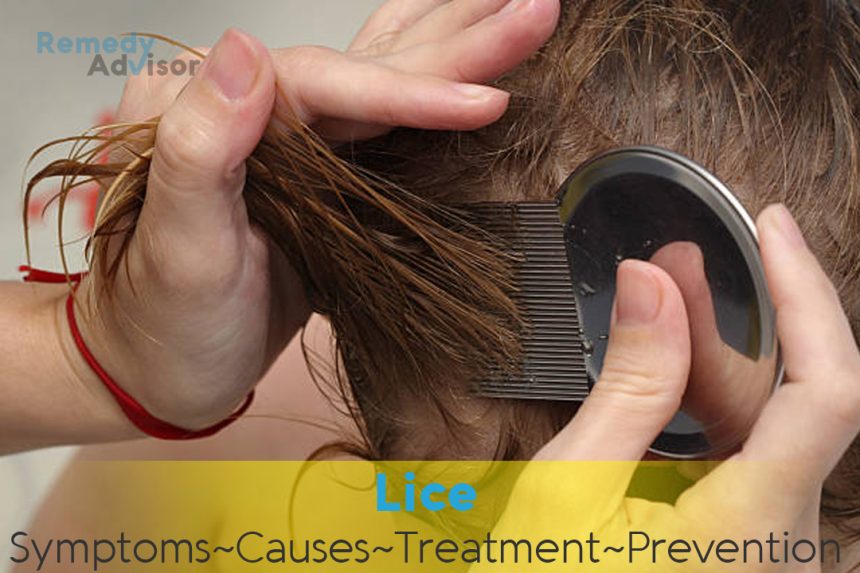What is it
Lice are flat, wingless parasites the size of a sesame seed that live on the body and cause skin inflammation by biting and by sucking blood. Three types of lice affect humans. Head lice (Pediculus humanus var. capitis) live on and suck blood from the scalp, causing severe itching. These lice pose a major public health problem in the United States, especially with school-age children. It’s estimated that about 16,000 new cases of head lice the most common lice infestation occur every day.
Pubic lice (Phthirus pubis), also known as crabs because of their crablike shape, live in the pubic area. These tiny parasites are passed through sexual contact or lice-infested bedding or clothing. They attach firmly to the hair follicles in the pubic area and feed off human blood, causing an unrelenting itch.
Body lice (Pediculus humanus var. corporis) Live in the seams of clothing, usually on people who don’t change their clothes often enough. The lice attach to the body to feed, typically causing lesions on the shoulders, buttocks, and abdomen.
All three types of lice can be controlled by treating them with an insecticide, and by thoroughly cleaning all home furnishings and clothing.
Symptoms
Head lice
- Extremely itchy scalp.
- Presence of nits (eggs) on hair near the scalp.
- Presence of tiny insects, usually at the base of the neck or behind the ears.
- Enlarged lymph glands at the back of the scalp (severe cases).
Pubic (crab) lice
- Uncomfortable itching and scratching in the groin area, often intense.
- Presence of tiny nits in the crotch area.
Body lice
- Red bites on the skin, particularly the but- tocks and trunk.
- The presence of nits in clothing, particularly the underwear. When they need to feed, lice leave clothing for the body.
What causes it
Lice are often transmitted in overcrowded or unhygienic environments, although even good hygiene habits don’t always ensure protection against head lice infestation. Head lice seem to prefer feeding on clean scalps, for example. All it takes to start an outbreak is to have one infected individual come into close contact with others or share with them a hat, hairbrush, comb, or clothing.
Female lice lay approximately six eggs daily. These eggs, or nits, are tiny translucent specks that look like dandruff and cling firmly to hair shafts. They hatch in 8 to 10 days and reach maturity in 18 days. To survive, lice pierce the skin and feed off human blood. This leads to skin inflammation and intense itching for the victim.
What if you do nothing
If lice are not treated with an insecticidal shampoo, cream, or lotion, they can spread quickly, infesting anyone who comes in close contact. The itching can also be close to unbearable.
Home remedies
Use a medicated shampoo
For head lice and pubic lice, several over-the-counter products are available among them Nix (which contains permethrin) and Rid and A-200 (which contain insecticides called pyrethrins). These are safer especially for young children than prescription products containing lindane, which is highly toxic. The Food and Drug Administration (FDA) recently advised that lindane be used only if over-the-counter products don’t work.
It’s important to follow label directions precisely; do not repeat a treatment simply because itching doesn’t stop immediately. The itching from extant lesions may persist for a few days after treatment, even though the lice have been eliminated.
Remove nits
Nits glue themselves to hair shafts so securely that ordinary washing and brushing will not remove them. A fine-tooth comb must be used to pull out the dead nits from the hair. To loosen them from the hair shafts, use a mixture of half vinegar and half rubbing alcohol and massage it into the hair before combing.
Part the hair in one-inch sections and begin removing all nits. Most are found in the hair behind the ears and at the base of the neck. It’s a time-consuming task, but you must be thorough; nits that aren’t removed may reach maturity and start the reinfestation.
Clean thoroughly
Wash all sheets, blankets, and pillowcases in extremely hot, soapy water Dry at high heat for 20 minutes or longer If possible, iron all clothing and linen. For clothing or toys that can’t be washed, put them in plastic bags and seal them securely for three weeks. Thoroughly vacuum all rugs, furniture, and mattresses; don’t forget your car.
Sanitize
Soak all hairbrushes and combs in rubbing alcohol for 10 minutes.
Keep checking for lice
Everyone living in the home should be inspected daily for lice. If any- one has scalp sores or itching, he or she should receive a dose of medicated shampoo, even if lice or nits are not seen in the scalp.
Prevention
Don’t share combs or hairbrushes. Sharing grooming items is a quick way to transmit lice.
Wash often
Bathe and shampoo daily, and put clothes in the laundry after a day of wear.
Inspect children regularly
Check especially for head lice. The nape of the neck and behind the ears are prime spots for nits and lice.
Notify others
If you or your child have lice, notify parents of school children that lice have been found. Adults should also inform sexual partners and co-workers.







